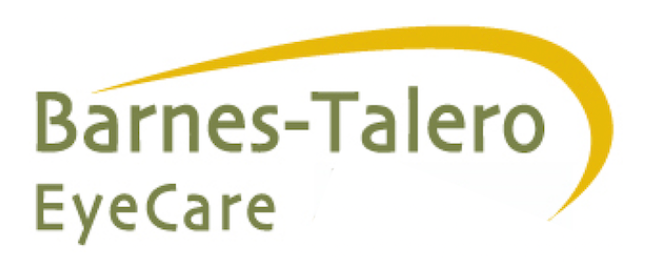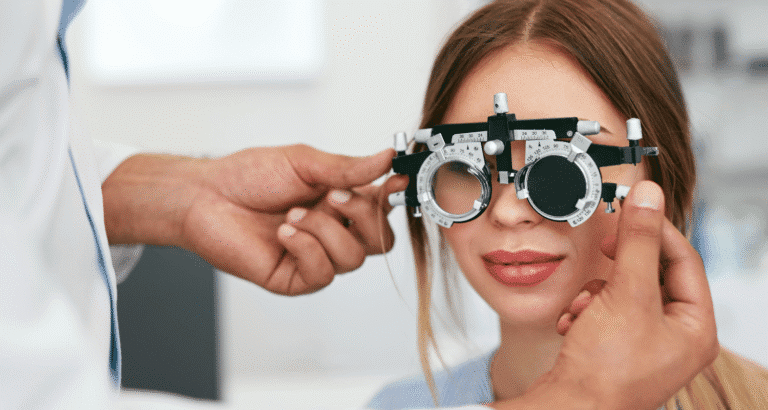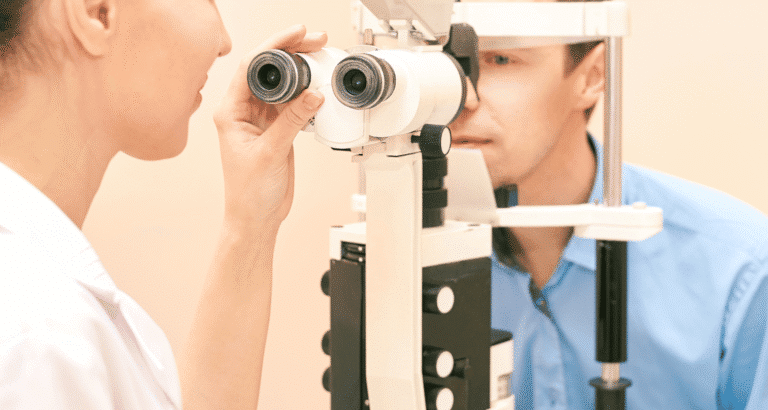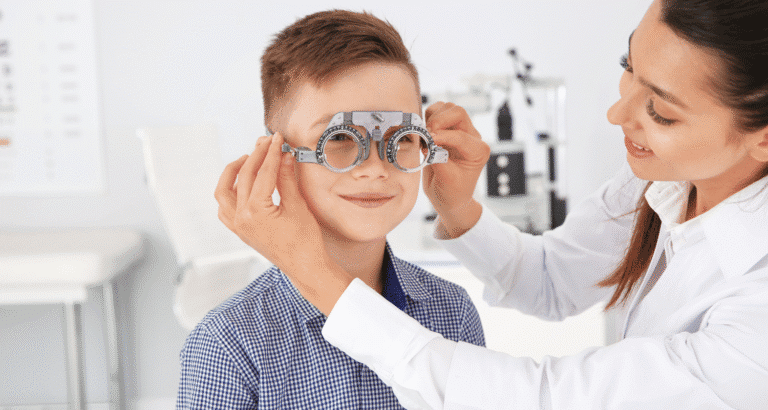Cataracts are one of the most common eye conditions, affecting millions worldwide, typically occurring with advancing age. At Barnes Talero Eyecare, we understand the importance of maintaining healthy vision, allowing you to live life to its fullest. That’s why we are dedicated to educating our patients about eye health and cataracts. Cataract surgery is typically the best solution, but understanding how do cataracts affect your vision and the options available can help you be an informed advocate for your eye health.
What Are Cataracts?
A cataract is a clouding of the eye’s lens that is natural, and it sits behind your iris and pupil. The lens focuses light on the retina, allowing you to see clearly. When this cataract develops, the lens of your eye becomes cloudy and visual acuity fades, becomes hazy, or loses vibrancy. Cataracts typically develop gradually and can affect one or both eyes. It is most often an age-related condition, but trauma, some medications, genetics, diabetes, or long-term exposure to UV light can also cause it.
How Cataracts Affect Vision
Cataracts, which obstruct the eye’s own lens, can make vision blurry or cloudy. They can desaturate colors, increase glare, and degrade night vision, making daily tasks more difficult.
Blurry or Clouded Vision
Blurred or cloudy vision is one of the first signs of cataracts. This occurs when the lens loses its transparency, diffusing the light, and fails to focus correctly onto the retina. Colors can also appear lackluster or washed out, which can affect the sharpness of fine details.
Glare and Sensitivity to Light
Cataractous individuals often say they’re more sensitive to sunlight or strong lights. And at night, it can be challenging to drive due to the glare from oncoming headlights. This is because the cloudy lens scatters incoming light, resulting in halos or starbursts around sources of light.
Double Vision
Monocular diplopia (double vision out of one eye) may also be produced in the presence of a cataract. This is a result of the cataract interfering with the path that light takes through your lens, causing double or overlapping images..
Fading or Yellowing of Colors
Colors can appear less bright as cataracts develop.. You may notice that whites appear more yellow or that bright colors are dulled. This is due to the natural lens that yellows with age.
Difficulty Seeing in Low Light
Cataracts can decrease the amount of light that reaches your retina, which makes it difficult for you to see in low-light situations. Reading the menu in a restaurant, going down a flight of stairs, or entering a dark area may become more challenging.
Frequent Changes in Prescription Glasses
Vision can wax and wane as cataracts grow. Some people notice a need to reschedule their eyeglass or contact lenses prescriptions closer together than before to maintain clear vision.

Causes of Cataracts
When the eye’s natural lens becomes cloudy and vision is compromised, cataracts form. The condition is most often due to age, but genetics, diabetes, eye injuries, or certain medications can also cause it. Additionally, UV exposure and lifestyle factors can also contribute to its formation.
Aging
As we get older, the eye\’s natural lens becomes more and more opaque, which is the most frequent reason for cataracts. The proteins in the lens may also, over time, begin to clump together, forming cloudy areas that can disrupt sight. In many cases, cataracts do not develop quickly, and only one eye (or both) can be affected.
Diabetes
High blood sugar can damage the lens, causing it to become cloudy and increasing the risk of cataracts. Diabetes can cause the development of cataracts to start earlier. Controlling blood sugar may slow the progression of cataracts.
Genetics
If family members have experienced cataracts, you are more likely to be at risk, which indicates that genetics affects the speed and severity with which cataracts develop. Individuals with a parent or sibling who has had cataracts may benefit from more frequent eye examinations to detect them at an early stage.
Eye Injuries or Surgeries
Injury or trauma to the eye, such as impact or penetration, can also lead to the development of cataracts by altering the lens structure. Additionally, other eye surgeries, such as glaucoma surgery or a procedure to repair a detached retina, can trigger secondary cataracts.
Medications
Other risk factors for cataract include long-term use of medications such as corticosteroids. Different medications, including certain diuretics or antipsychotic drugs, may also play a role. Routine eye exams are crucial when using these medications for extended periods.
UV Exposure
Long-term exposure to ultraviolet (UV) radiation from the sun can damage the proteins in the lens, leading to lens clouding and the development of cataracts. UV-resistant sunglasses and wide-brimmed hats can help reduce this risk, especially when spending extended periods outdoors.
Lifestyle Factors
Certain lifestyle factors can accelerate the development of cataracts. Cigarette smoke provides offensive toxins to the eyes, while too much alcohol leads to lens disorder, and poor nutrition without antioxidants leaves the eye with low protection against oxidative injury. Establishing better habits may help slow the progression of cataracts.
Cataracts Treatment Options
Cataracts can’t be reversed naturally; however, there are effective cataract treatment options that can improve eyesight. The right solution for you will depend on the severity of your cataracts, your lifestyle needs, and your overall eye health. Timely identification and intervention offer the potential to prevent vision loss and preserve quality of life.
Early Management
Cataracts cannot be reversed naturally; however, they can be managed with stronger prescription glasses, magnifying lenses, or improved lighting in mild cases. These alternatives can preserve sight in the short term, but they do not halt the progression of cataracts.
Cataract Surgery
Cataract surgery is a procedure in which the eye’s natural lens, clouded by cataracts, is removed and replaced with an artificial lens (IOL). This treatment is highly successful and relatively low-risk, with many patients experiencing a significant improvement in their vision. One or both eyes can be treated, and the treatment varies depending on the severity of the cataracts. Contemporary methods lead to rapid convalescence with minimal discomfort or complications.
New Treatments for Cataracts
People with cataracts can look forward to a brighter future thanks to eye science. In certain areas, new cataract treatments have evolved beyond traditional surgery to concentrate on precision, safety, and improved vision correction, meaning modern patients have a wider range of options than ever.
Femtosecond Laser-Assisted Surgery
Femtosecond Laser-Assisted Cataract Surgery is a revolutionary new technology that utilizes a highly accurate laser with a retractive diameter of 2mm to create incisions and soften the cataract. This tool enables surgeons to execute steps of the procedure with unprecedented precision, thereby increasing both IOL placement accuracy and safety. Patients experience shorter recovery times, less eye trauma, and better visual outcomes when compared to traditional manual surgery.
Advanced Intraocular Lenses (IOLs)
Today, cataract surgery involves more than just replacing a cloudy lens; it also involves replacing the lens with a clear one. State-of-the-art IOLs enable patients to correct a range of vision problems simultaneously. Depending on the lens selected, vision can be optimized at near through multifocal IOLs, correction of astigmatism is provided via toric IOLs, and natural focusing (like young eyes) is accomplished with accommodating IOLs. These lenses can significantly reduce or eliminate the need for glasses after surgery, offering a highly customized approach to restoring your vision.
Minimally Invasive Techniques
Minimally invasive cataract surgery requires less cutting and the use of advanced surgical instruments to remove your clouded lens effectively and safely. Minor cuts have a lower chance of infection, faster healing, and less post-operative pain. Patients benefit from more rapid visual recovery and improved overall vision, making this approach appealing to those who require cataract surgery.
Choosing the Right Cataract Treatment
Choosing the proper cataract treatment depends on the severity of your cataract, your lifestyle, and your visual goals. An eye care professional can assess your vision, examine your eyes, and discuss the potential benefits and risks of surgery with you. In certain situations, when visual disturbances are mild, surgery can be postponed.
Preventing Cataracts
Not all cataracts can be prevented, but you may lower your risk or slow the development of the condition. Other ways to help keep eyes healthy include wearing sunglasses with UV protection, eating a diet that is high in antioxidants, as well as vitamins C and E, omega-3 fatty acids, other nutrient-rich foods, and managing chronic health conditions such as diabetes that can impact eye health, not smoking or drinking excessive amounts of alcohol, and scheduling regular exams for the eyes.
When to Consider Cataract Surgery
You may require cataract surgery if vision-related activities of daily living, such as reading or driving, become difficult, if you experience frequent glare or are unable to see satisfactorily in low-light situations and/or at night (even with new spectacles), or if your prescription glasses no longer offer acceptable vision correction, among other options.
Conclusion
Cataracts can cause significant changes in vision, including cloudy, blurry, or distorted vision. Understanding the reasons, symptoms, and treatments will enable you to make informed decisions about your eye health. Although early treatment includes lifestyle modifications and glasses, cataract surgery remains the tried and tested permanent solution for improved vision.
At Barnes Talero Eyecare, we have experience guiding patients through the process of choosing cataract treatment. From explaining cutting-edge cataract treatment options, our eye care team is committed to enhancing your quality of life by improving one thing in your world: your vision. Whether you are considering surgery or trying to prevent it, you can count on Barnes Talero Eyecare to walk you through all your options.
FAQ
How long does it take to go blind from cataracts?
Cataracts grow slowly, and an untreated cataract can cause complete blindness in many years, if not decades. Early diagnosis and treatment typically prevent excessive vision loss.
What are the symptoms of cataracts and glaucoma?
Cataracts result in blurred vision, dull colors, glare, and difficulty seeing at night. Glaucoma has few symptoms in its early stages, but untreated, it can cause the loss of peripheral vision and permanent blindness.
What are the three types of cataracts?
The three primary types include nuclear cataracts (clouding in the center of the lens), cortical cataracts (clouding around the edges of the lens that causes spoke-like formations to develop), and posterior subcapsular cataracts (clouding at the back of the lens).
What does vision look like with cataracts?
Vision is blurry or cloudy with colors that appear faded. Light sensitivity and halos around objects at night are other typical issues, which can make daily activities such as reading or driving challenging.
How to prevent cataracts?
Protect your eyes from UV rays with sunglasses, eat a diet full of foods rich in antioxidants, keep chronic diseases like diabetes under control, don’t smoke, and have regular eye exams to catch changes early.





